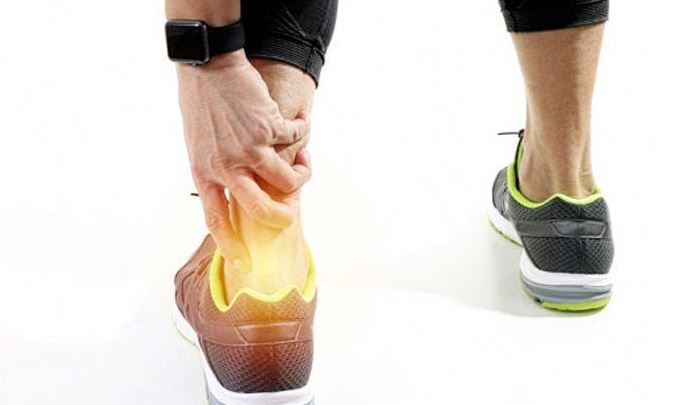Health
ACHILLES TENDONITIS: Causes, Symptoms, and Treatments

One of the largest tendons in our body is the Achilles Tendonitis. Your calf muscles connect with your heel bone with these tendons, which helps in running, walking, and jumping. When tendons become, inflamed Achilles Tendonitis occurs. It can be of further two types insertional and noninsertional. Insertional Achilles Tendonitis occurs on the lower portion of the heel and can happen to anyone who is inactive. On the other hand, Noninsertional Achilles Tendonitis occurs above the heel, which is the middle area of the tendon and generally affects the younger and athletes.
What are the causes of Achilles Tendonitis?
When the tendons have been overworked or strained, Achilles Tendonitis occurs. If you are an athlete and suddenly changes, the amount of exercise or its intensity can cause pain. Lack of flexibility and tight muscles of calf muscles and ankles can stretch and overstress the tendon. As we grow older, they become less flexible and become more susceptible to Achilles tendonitis. Sudden changes in footwear or poor athletic performance can also cause it.
Risk Factors
Numerous factors can trigger the risk of Achilles tendonitis, which includes the following:
- Age
As you age, Achilles Tendonitis can occur very commonly.
- Gender
Men are more likely to get Achilles Tendonitis than women.
- Physical Issues
If you have a flat foot, then that can put more strain on your heel. Besides, obesity and tight calf muscles add on to it.
- Training Choices
The risk of Achilles increases when you wear worn-out shoes or stiff sole shoes. They generally occur in cold weather, and running can predispose you to injuries related to Achilles.
- Medical Conditions
People with high blood pressure and psoriasis are at higher risk of developing this tendonitis.
- Medications
There have been certain types of antibiotics that are associated with a higher risk of Achilles Tendonitis.
How Does it Feel Like?- Symptoms
The most common sign of Achilles Tendonitis is heel pain. Pain that starts slowly and worsens over time which can even extend to the lower back. When running or involved in any other physical activity, that pain becomes worse, and that is the common symptom of it. Many patients have complained about tenderness or stiffness after waking up in the morning, which generally improves as your day passes by. The patient having the problem might feel mild swelling around the heel that gets even worse with physical activities.
Treatment of Achilles Tendonitis
The best source of advice you can only get from your doctor as with any medical emergency you do. Your doctor can only recommend to you the appropriate method for treating the issue and relieving your pain. The recommended method often includes the RICE method.
The RICE Method helps in reducing inflammation, swelling, and pain. This method includes rest, ice, compression, and elevation. In order to speed up the recovery process, your doctor may recommend some anti-inflammatory medications.
These methods were to recover you from the injury but to resume your physical activities, and you will need physical therapy too. In order to prevent the condition from recurring, an Aircast Airheel can help support your ankle. The more support you provide to your ankle, the less it will strain your heel. While providing compression to reduce swelling, it helps to cushion the Achilles.
In severe cases, the patient will require rest, and your therapist will encourage you to wear Aircast Airheel for a longer period. The objective of active recuperation is to give you calf and heel extend that help with the adaptability of the Achilles. They may likewise give you practices known as “unconventional reinforcing,” which can help treat interminable ligament issues. By fusing extending, quality preparing, and froth folding into your daily practice, you can help forestall this irritating injury.





